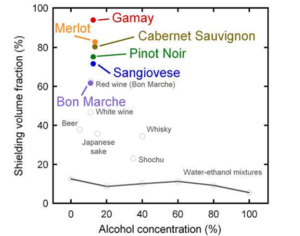Fin out more here.
Although, all it does is solve Rubik Cubes faster.
Does something that can do that have any real world uses?
|
|||||
|
Fin out more here. Although, all it does is solve Rubik Cubes faster. Does something that can do that have any real world uses? WUWT has a posting about how Jim Hansen of NASA says that the skeptics are winning the argument, i.e. the argument against him and his fellow CAGW-ers. In the midst of the largely agreeing comments at WUWT (yes you are losing you jackass, and it serves you right, etc.), there was, on the other hand, this from Peter Donaldson (April 10, 3.19am):
The punctuation is a bit sketchy, but the point is a good one. There are times when I suspect that Donaldson will be proved right, and that although winning the argument at the merely intellectual level is totally necessary to overthrowing the vested interests excused by the CAGW scare, these interests may just prove to be too firmly entrenched. And then I read this, also at WUWT, about how many of Hansen’s colleagues (and not just any old colleagues) at NASA have come out publicly in favour of climate skepticism, and against the bogus certainties of the CAGW tribe:
If NASA changes its public tune, that has to be big. It’s Hansen who is now starting to look like a sidelined oddball. As Instapundit (that’s him linking to the same WUWT story) would say: well, good. Let’s hope the political decisions and the money decisions now start to tell the pessimistic Peter Donaldson that he is being too pessimistic. I’m sure he would be delighted if that happened. EMC2, the company founded to advance Dr. Bussard’s fusion technology to a practical state, has been flying so under the radar that you really have to hunt to find out what is going on. They are still moving ahead and the technology has not hit any major road blocks that I have been able to find out about. The US Navy ONR is still funding them and is the reason for keeping the profile low. This bit on Wikipedia is the only bit of really current news I have been able to find:
This game is still afoot. Have any of us mentioned here that Friedrich Hayek died exactly twenty years plus one week ago, i.e. on Friday March 23rd 1992? I believe not. Sam Bowman, in a posting on March 23rd 2012, ensured that the ASI Blog was responsible for no such omission. He marked the occasion with a couple of Hayek quotes, from The Constitution of Liberty. I particularly liked the second one:
One of the contrasts in the contemporary world that I keep banging on about here is how different the designing and making of high tech gadgetry (which still benefits – and almost miraculously so – from exactly the sort of dispersed knowledge and dispersed intelligence that Hayek was talking about) is from the management of the world’s financial system (the higher reaches of which are notorious for depending on the good judgement of a tiny few supposedly wise but actually all too fallible political appointees). As Sam Bowman said, a week ago:
Indeed they might. Two weeks before the next election, turn off all coal-fired power stations and give the American public a good hard look at their long bleak future. – commenter “old44” (March 28 5.14am) on a posting at WUWT entitled New EPA rule will block all new coal-electric generation Last year, physicists discovered that red wine can turn certain materials into superconductors. Now they’ve found that Beaujolais works best and think they know why. – The Physics arXiv Blog (with thanks to the ever alert Instapundit – how does he keep doing it?)  “To the nearest whole number, the percentage of the world’s energy that comes from wind turbines today is: zero. Despite the regressive subsidy (pushing pensioners into fuel poverty while improving the wine cellars of grand estates), despite tearing rural communities apart, killing jobs, despoiling views, erecting pylons, felling forests, killing bats and eagles, causing industrial accidents, clogging motorways, polluting lakes in Inner Mongolia with the toxic and radioactive tailings from refining neodymium, a ton of which is in the average turbine – despite all this, the total energy generated each day by wind has yet to reach half a per cent worldwide.” A couple of months ago now, I went ahead and bought that new camera that I had for quite a while been thinking about buying. The circumstance that provoked me into making a decision earlier than I otherwise would have done was a trip, early in February, to Paris. Yes, it was cold: That’s a water feature, somewhat frozen when I photoed it, in La Défense, the big clump of modern architecture in the west of Paris. The thing that clinched it for it, in favour of the Panasonic Lumix FZ150, was how reviewer after reviewer used phrases like “an all round winner” and “all round best”, as in best for the sort of camera that I wanted, when writing about it. Such talk suggested to me: excellence in what I knew I wanted (zoom, picture quality, good video recording) together with excellence in other areas that I would only learn about after I had started using the thing. So it is proving. The other camera I was considering buying was the Canon SX40 HS. I can’t compare my new Lumix with that, and will presumably never know for sure if I made the exact right choice. But I can compare my new Lumix with all the previous cameras I have ever owned, and in particular with my most recent previous camera, a Canon S5 IS. And I can now tell you that I am a very happy snapper. Could I have chosen even better? Perhaps. Have I meanwhile chosen well? It certainly feels that way now. The x24 zoom supplied by the new Lumix is wonderful, just as I expected it would be. The Canon SX40 HS has x35 zoom, but I reckoned that x24 would suffice for my purposes and so it is proving: That’s a snap taken last week from Primrose Hill. On a typical London day, the limits of how far your camera can see with clarity are set not by its lens but by the clarity of the air, which is mostly set at: not very. So I am very happy with my new zoom superpower. Other improvements on my old Canon were not quite so expected. → Continue reading: My new Panasonic Lumix FZ150 According to a news brief from a Janes newsletter, the move into the realm of what was once science fiction weaponry continues apace:
The future is here. Charlie Stross writes great science fiction and a blog which usually leaves me wondering how I can enjoy so much the novels of a man with whom I agree so little. In a recent post he linked to an article by UCSD associate professor of physics Tom Murphy to explain why space colonisation will not happen. Since the site is called “Do the Math” I was expecting some numerical analysis of space colonisation. Instead the article contains lots of reasons why space travel is hard and slow and requires lots of energy and is not likely to be done much more by NASA, but nothing that suggests it violates the laws of physics. I like physicists. They do real science that gets answers from proper observations. So I was a bit disappointed by the space article and went in search of goodness. There must be some good insight that a physicist like Murphy can offer. He analyses the growth of energy consumption. Since 1650, total energy usage of the United States has increased by about a factor of 10 every 100 years. If energy production continues to accelerate at this rate, we’ll heat the atmosphere to 100C in 450 years. Murphy is not saying this will happen, he is saying that there is a limit to how much energy we will want to produce. So far so good. But how much energy can a person use? Why does it matter?
So this is to be a Limits To Growth argument. In this other post Murphy talks a lot about the limits to how energy efficient things can be. He is right that it will always take a certain amount of energy to heat food, for example, and that there are processes that can not be improved beyond physical limits. But he seems unable to imagine economic growth without growing use of energy. Doing the same task with half the energy, something that is a routine advance in computing technology, is economic growth. Murphy admits this, but gets hung up on the fact that these other things can not improve. This is a problem, because
To which I say: what is wrong with that? Here is what Murphy thinks is wrong with that, and here we get to what may be his fundamental error:
The first paragraph simply lacks imagination, but the second one is almost unforgivable. Food production has already gone from being nearly 100% of the economy to a much smaller proportion of it. Are farmers poorer as a result? Of course not. There are fewer of them and each one produces food for more people. This is how food has got cheaper in the first place. A human body needs 100 Watts to work. We could completely automate food production using some multiple of 100 Watts per person which is only a small proportion of each person’s energy budget, and there is your almost free food. With this kind of material abundance economic activity can be completely intellectual, no problem at all. Can growth continue forever after that? It is possible that we will hit some limit of how much computation, and therefore intellectual activity, can be done with the available energy. Ray Kurzweil has tried to calculate the physical limits of computation and his answers are in units of how many entire civilisations can be simulated per second. So the limits are quite high. This is Murphy’s other error. He writes, “I am unsettled by my growing concerns about the viability of our future”. In response to these concerns he proposes abandoning growth, not having kids and not eating meat. But he has gone the wrong way. He calculates that there are limits and is afraid of attempting to reach them. If you flip the argument around, what physics tells us is just how much wealth is possible. I have already described how material abundance can be had for very little energy. There is plenty of energy for a much larger population to live a much longer life with no material concerns and as much entertainment and intellectual stimulation as a person could want. Perhaps Murphy knows this, and it is the source of his cognitive dissonance when he writes, “such worrying is not consistent with who I am.” Incoming from Rob Fisher:
The point of the Padfone is that it is a mobile phone, a tablet, and a regular computer with a regular keyboard, all in one big clutch of stuff. It has just the one “brain” so to speak, and it is all in the phone. When you want the tablet or the computer to power up, you stick the phone inside the tablet, and the phone does everything from in there. This is what it all now consists of:  And this is how the phone goes into the back of the screen:  I found those pictures here. And here is video of the(se) thing(s), being demonstrated by someone who knows his way around it/them. Also prompted by Rob Fisher, I did a posting here about this same gadget last July, when it was merely due Real Soon Now. I am especially proud of this bit of commenting on that from me (which follows on from a bit about how Apple kit (such as my Apple keyboard which I use with my otherwise totally PC PC – which still works absolutely fine) just works more nicely:
Not every commenter agreed that this Padfone idea was a runner. Many thought the demand just would not be there for this new set of toys, and some who did think the idea a good one doubted whether the Asus version would be a success. We shall soon be finding out who was right. Personally I love the idea, but have my doubts about Asus making it work well (based on bad experiences with the Asus Eee-PC). If I am wrong, and this spec doesn’t catch on, it will be Asus and their immitators who lose money, not me. If only the world’s financial system could work this well. If this set of toys, or some set very like it, does catch on, my non-geek sense is that this will maybe represent a huge breakthrough for Google and their Android operating system, because Android was all along designed with this kind of integrated all-in-one system in mind? Yes? Maybe: no. What do I know? But, comments on that last point in particular would be much appreciated.
Except there were two horses. Oh no. It couldn’t be, surely? |
|||||

All content on this website (including text, photographs, audio files, and any other original works), unless otherwise noted, is licensed under a Creative Commons License. |
|||||